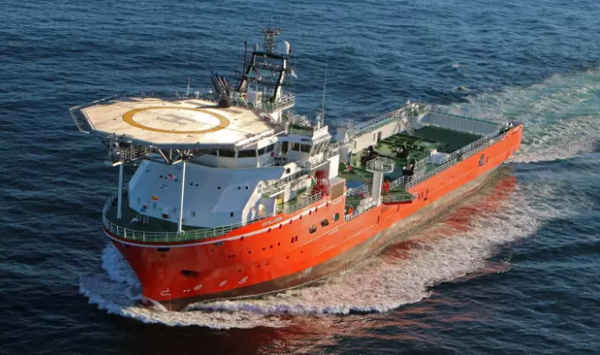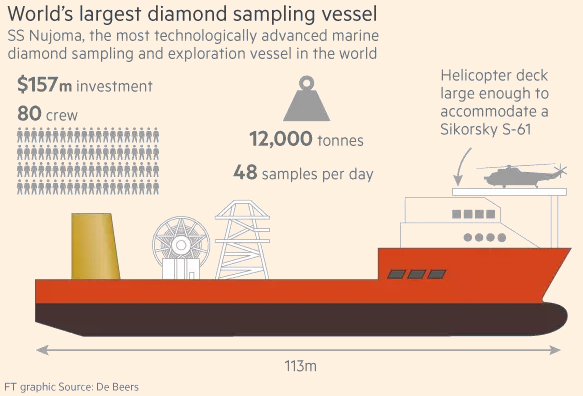
De Beers has launched the world’s largest diamond exploration ship to operate off the coast of Namibia, as the diamond producer looks for higher-value gemstones to help it fight off increasing competition.

The SS Nujoma, the world's largest diamond exploration vessel, owned by De Beers © Reuters
De Beers has launched the world’s largest diamond exploration ship to operate off the coast of Namibia, as the diamond producer looks for higher-value gemstones to help it fight off increasing competition.
The 113m-long SS Nujoma can sample for diamonds at double the speed of other ships in the company’s fleet and help extract higher-value diamonds than on land, said Bruce Cleaver, De Beers chief executive.
“Offshore diamond mining is becoming increasingly important in meeting global demand for diamonds as many of the major onshore deposits have now been discovered,” Mr Cleaver said.
The spending on the ship comes as De Beers and Russia’s Alrosa, the world’s biggest diamond producers, face rising supply from new mines run by smaller mining companies.
Analysts at RBC Capital Markets forecast that total diamond supply will increase 4 per cent to 145m carats in 2018 “before retreating as older mines begin to reach the end of their lives”.

New production from companies including Firestone Diamonds, Petra Diamonds and Stornoway Diamond will rise from 4.5m carats this year to 8.5m carats by 2020, they estimate.
That includes projected supply from the Gahcho Kué mine in Canada’s Northwest Territories, which De Beers is developing in a joint venture with Mountain Province Diamonds.
The diamond industry is also facing a series of threats to its future from man-made “synthetic” diamonds to the changing tastes of millennial consumers.
Analysts at Citi forecast that man-made diamonds, which have the same composition as natural diamonds, could rise to 10 per cent of supply by 2030 from about 2 per cent currently.
That is pushing miners to focus on higher-value diamonds. Diamonds from the seabed in Namibia are worth $500 a carat, double the average value of De Beers’ current production, Mr Cleaver said.
“As the world changes, it’s very important to have profitable production,” Mr Cleaver said. “It’s more expensive than mining on land but carats are much more valuable.”
The $157m ship searches for diamonds at 120m-140m below sea level, said De Beers. The Anglo American-owned company has been mining for offshore Namibian diamonds since 2002 and last year that area accounted for 1.2m carats, out of a total output for De Beers of 27.3m carats.
Diamond-producing countries such as Botswana and Namibia have sought a greater share of revenue from the industry. Last year Namibia won a deal from De Beers to secure the right to a greater share of diamonds from its mines for 10 years.
The Namibian government now receives 80 cents of every dollar generated by their diamond partnership, according to De Beers, and it is the largest contribution to the country’s economy.